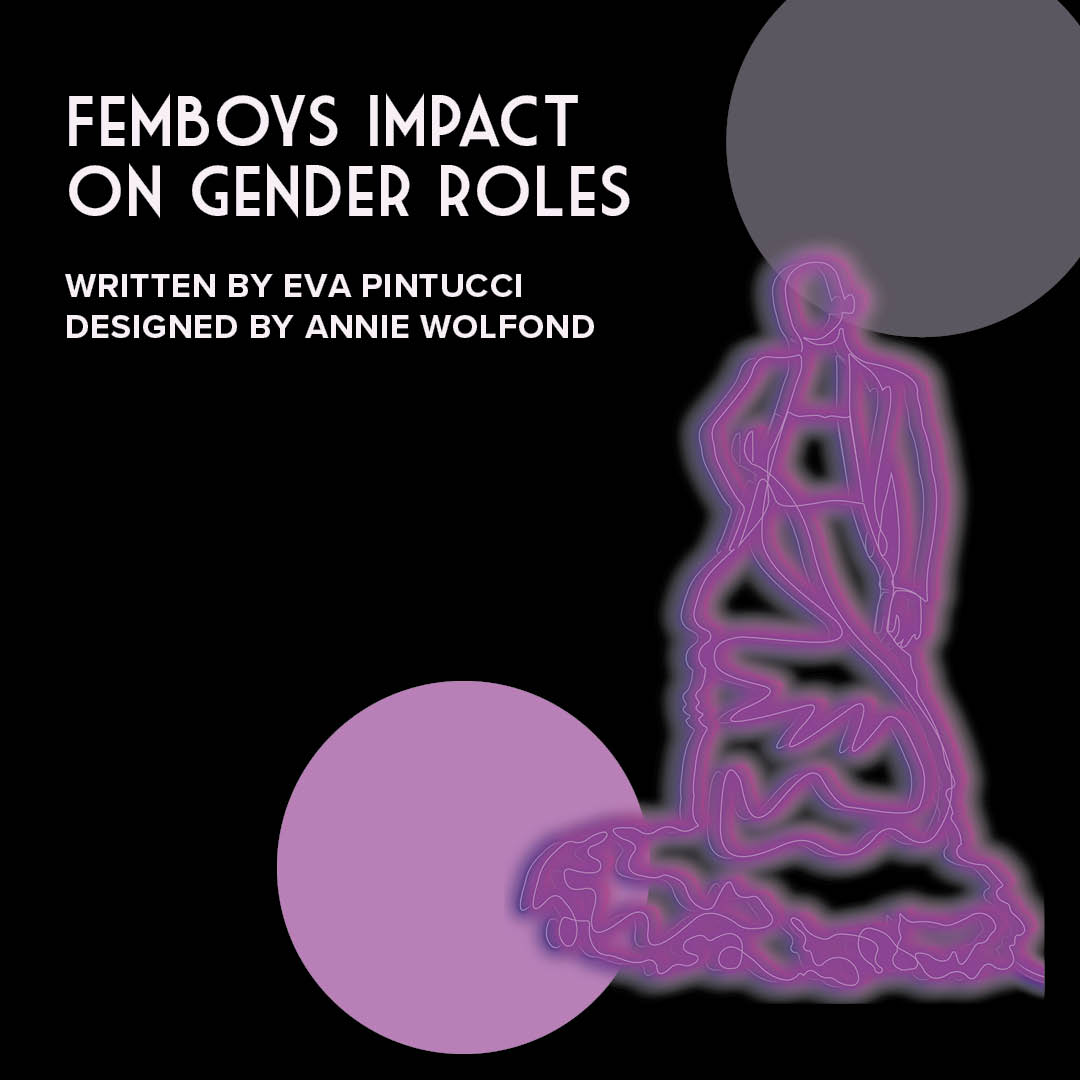
Starting in the 1950s and with the wide emergence of the suburban nuclear family, the United States constructed boxes of gender as a binary between the dominating, powerful man of the house, and the passive, domestic wife. In this gender binary, the fashion industry monopolized off of constructed ideas of gender and the rigid confinement of social expectations for men and women. However, moving into the 70s, 80s and 90s, these gender binaries were encroached upon by pop and rock stars such as Boy George, Prince and David Bowie, who all played with the idea of androgyny and femininity in their performances.
In modern times, and especially within the past year, the resurgence of androgyny and breaking of gender norms has emerged through the “femboy” culture that has arisen in pop culture social media, such as on the app TikTok. This “femboy” culture is seen through the popularity of pop stars like Harry Styles, who continuously challenges male gender norms by wearing dresses, painting his nails and styling “traditionally feminine” fashion items (such as his infamous muppet scarf). Even as a straight identifying man, Harry Styles has broken down the barrier for conventional male fashion and exemplified the trend of allowing femininity for cisgender and heterosexual men.
On TikTok, men and nonbinary folks of all sexual orientations have begun to embrace the similar breaking of gender conventions as a part of popular male culture. Content creators such as Seth Williams (@thatsusboi) and Judd Anderson (@.jvdd) are among the most popular in leading this “femboy” trend and defying what is seen as acceptable for men to wear. These TikTokers have expanded trends such as pearl necklaces, tennis skirts, extravagant eye makeup looks and corset tops to the male audience on TikTok. By doing this, their influencers set trends that all genders, and not just those who are female identifying, can participate in.
The impact of “femboy” culture can even be seen for usually masculine influencers such as former Sway House member Blake Gray. Gray’s recent attendance at New York Fashion Week featured a collaboration with American Fashion designer Prabal Gurung, in which Gray wore thick eye makeup along with a black-and-white frill woven jacket and wide leg pleated dark wash jeans. The diffusion of eye makeup trends to influencers who are seen as heteronormative signifies how femboys have worked to bring their defiance of gender norms to mainstream culture in order to promote greater acceptance and fluidity in fashion.
As “femboys” have just emerged throughout popular culture, they will continue to trailblaze the shift in perception of femininity in men’s fashion and act as trendsetters for all genders to embrace the breaking of gender norms and experiment within cross gender fashion and conventions. As time goes on, this gender fluidity in fashion will likely diffuse even further where these trends will be adopted in everyday wear for men, whether in schools, the workplace or in street style. On the flip side, this exploration also sets up the ability for women of all sexualities to embrace more masculine fashion trends and experiment with baggier, less form-fitting clothing. This can already be identifiable in trends like baggy jeans and pantsuits, and will likely continue to expand as gender fluidity is more widely utilized in fashion by people of all genders and sexual orientations.